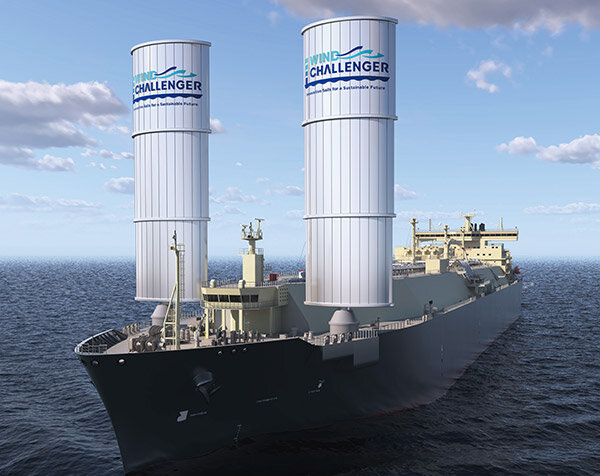Japan’s shipping firm MOL and a unit of US energy giant Chevron joined forces on what they say is the world’s first LNG carrier equipped with wind-assisted ship propulsion systems.
MOL and Chevron Shipping entered into a deal to install Wind Challenger, a hard sail wind-assisted ship propulsion system developed by MOL and Oshima Shipbuilding, to a newbuild LNG carrier.
This vessel is under long-term charter from MOL’s unit MOL Encean to Chevron Asia Pacific Shipping.
South Korea’s Hanwha Ocean is building the LNG carrier at its Geoje yard, and the vessel is scheduled for delivery in 2026, according to MOL.
Also, the 174,000-cbm LNG carrier will be about 286 meters long and 46 meters wide.
Last month, MOL secured approval from compatriot classification society ClassNK for an LNG carrier equipped with two Wind Challenger sails.
MOL said the Chevron-chartered vessel will be the first application.
Reducing fuel consumption and emissions
The shipping firm says Wind Challenger will help reduce fuel consumption and GHG emissions by using its unique telescopic sails.
The two sails made of fiber reinforced plastic will be up to 49 meters high and about 15 meters wide.
In addition to the robust design of Wind Challenger itself, additional safety measures include a fully enclosed navigation bridge and a lookout station on the vessel’s foredeck to further enhance visibility, MOL said.
For tradability, the installation position of the Wind Challenger aims to minimize impact on the existing design of membrane-type LNG carriers.
It will enable the retention of the existing mooring arrangement unchanged and thereby minimize impacts on ship shore compatibility, together with limited impact on the vessel’s windage area, MOL said.
“With the understanding and cooperation of Chevron, we are delighted to be able to extend the Wind Challenger project to LNG carriers in addition to the two delivered Wind Challenger-equipped bulkers and other ongoing projects,” Takeshi Hashimoto, president and CEO of MOL, said.

